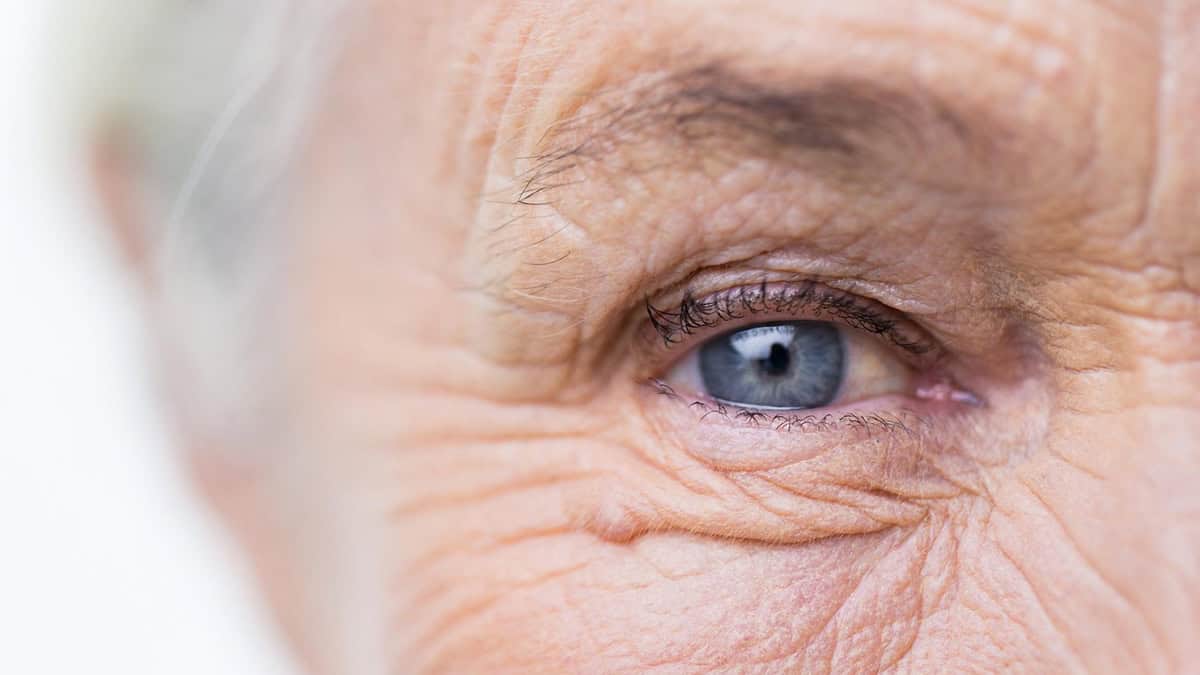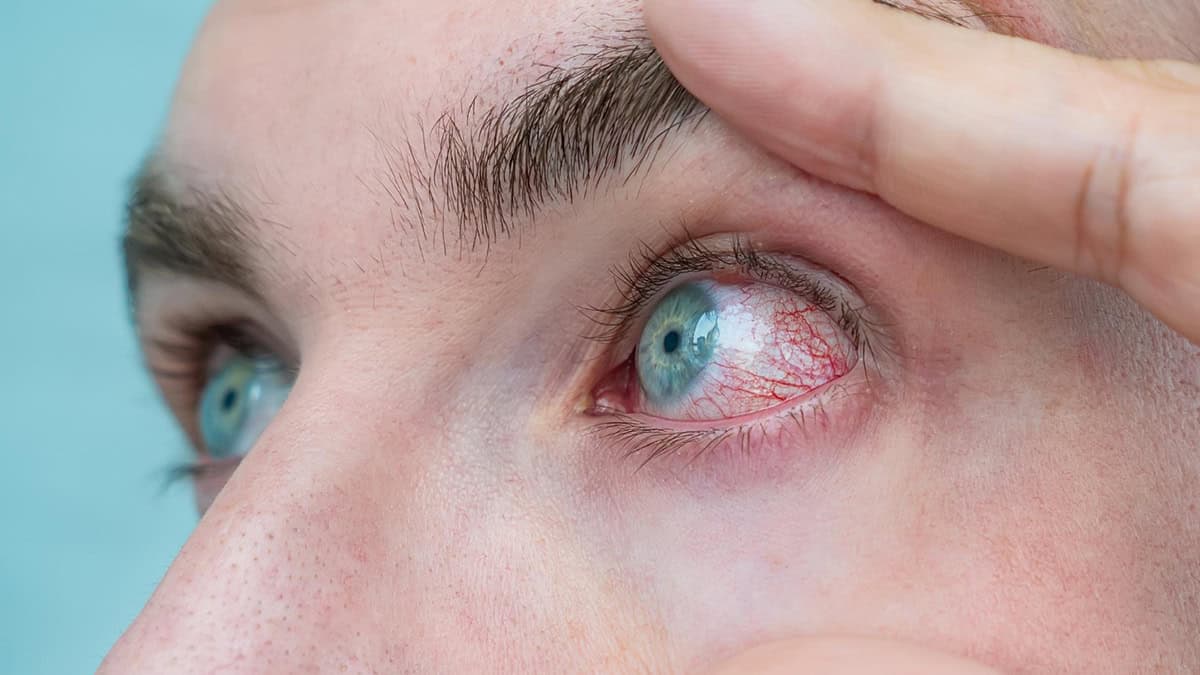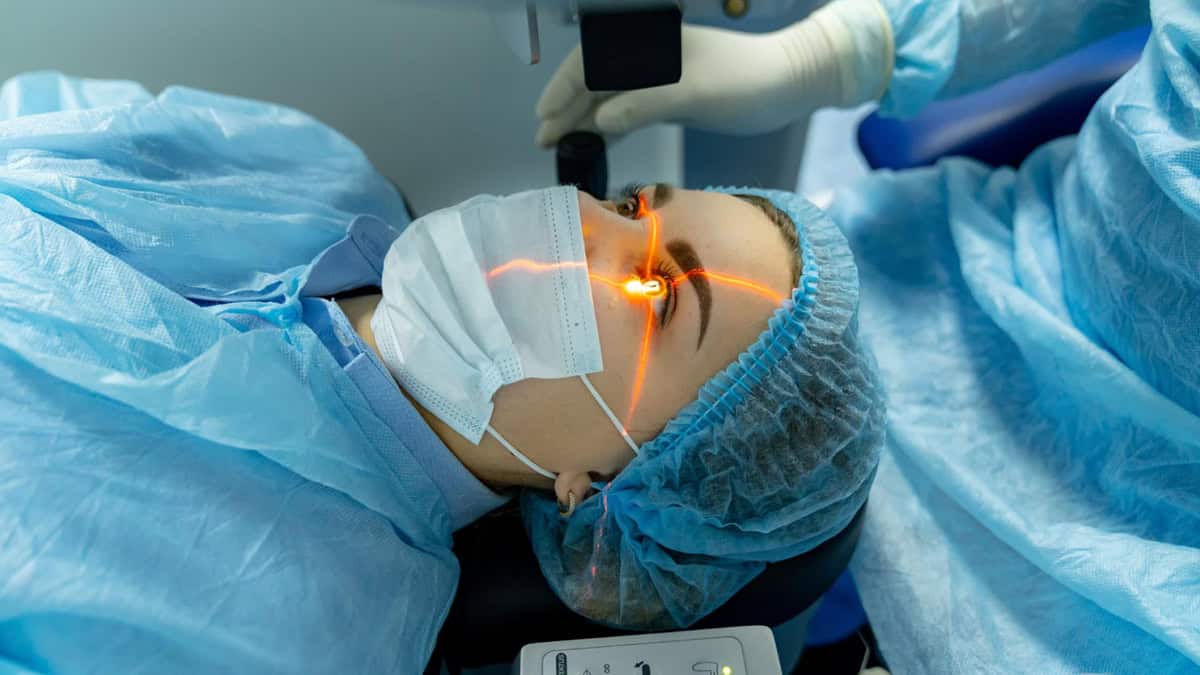All About Glaucoma: Symptoms, Causes, and Treatment Options
Physical Health

Glaucoma can gradually damage your sight for years without any obvious symptoms. By the time symptoms become apparent, your vision can already be affected. That’s why it’s sometimes referred to as the silent thief of sight.
Glaucoma is one of the most common causes of blindness and vision loss in people over the age of 60. Learning about the early symptoms and causes can help you recognize glaucoma before it causes permeant vision changes. If you have glaucoma, there are ways to slow the progression and manage your symptoms with proper treatment. Continue reading to learn all about glaucoma, its early symptoms, causes, and treatment.
What Is Glaucoma?
Glaucoma is a group of conditions that damage the optic nerve. Your optic nerve is the nerve responsible for transmitting information about what your eyes see to your brain. When the optic nerve is damaged, it can cause blind spots in your vision.
Glaucoma is a progressive condition, meaning that vision loss typically gets worse over time.
What Causes Glaucoma?
Researchers don’t fully understand why increased eye pressure causes optic nerve damage. Different types of glaucoma have different causes.
When most people talk about glaucoma, they’re talking about open-angle glaucoma because it’s the most common type. However, there are several different types of glaucoma. Below, we’ll discuss some of the more common types of glaucoma and their causes.
Open-Angle Glaucoma
Open-angle glaucoma is the most common type of glaucoma in the United States (U.S.). About 9 out of 10 people with glaucoma have this form of glaucoma.
The name “open-angle” refers to the drainage angle formed by your iris (the colored part of the eye) and the sclera (the white part of the eye). The drainage angle is a natural drainage system for the fluid that builds up inside the eye, called aqueous humor. In open-angle glaucoma, pressure builds up inside the eye even though the drainage angle is open. The increased pressure in the eye is thought to happen when fluid can’t drain fast enough.
In open-angle glaucoma, slow fluid drainage isn’t due to the drainage angle, it’s thought to be caused by a problem with the spongy tissue inside of the drainage angle, called the trabecular meshwork.
Angle-Closure Glaucoma
Angle-closure glaucoma — also called closed-angle glaucoma or narrow-angle glaucoma — happens when the iris blocks the drainage angle. As a result, fluid backs up and eye pressure increases. This type of glaucoma can occur slowly over time or suddenly.
Normal-Tension Glaucoma
People with normal-tension glaucoma have optic nerve damage with normal eye pressure. Health experts don’t fully understand why some people develop this type of glaucoma. It may be due to lower-than-normal blood flow in the optic nerve related to fatty deposits in the arteries.
Congenital Glaucoma
Congenital glaucoma is a rare type of glaucoma that babies are born with. In this form of glaucoma, a baby is born with a problem that affects fluid drainage in the eyes. Examples of conditions that can cause congenital glaucoma include:
- Aniridia
- Axenfeld-Rieger syndrome
- Marfan syndrome
- Congenital rubella syndrome
Secondary Glaucoma
Secondary glaucoma is when you develop glaucoma due to another medical condition. Health conditions linked to secondary glaucoma include:
- High blood pressure
- Diabetes
- Uveitis
- Cataracts
- Cancer
- Eye injuries
There are several types of secondary glaucoma, including:
- Neovascular glaucoma — glaucoma that develops when abnormal blood vessels grow in the eye and block fluid drainage
- Pigmentary glaucoma — glaucoma that happens when pigment from the iris breaks off and blocks fluid drainage
- Exfoliation glaucoma — a type of open-angle glaucoma where protein deposits in the eye block fluid drainage
How Common Is Glaucoma?
More than 4 million people in the U.S. and 80 million people around the world are currently living with glaucoma. Glaucoma can affect anyone, but some people have an increased risk. Risk factors for glaucoma include:
- Older age
- African heritage
- Nearsightedness (myopia)
- Farsightedness (hyperopia)
- Family history of glaucoma
- High blood pressure (hypertension)
- Diabetes
What Are the Symptoms of Glaucoma?
Glaucoma typically doesn’t cause any symptoms in the early stages of the disease. That’s why about half of people with glaucoma don’t know they have it. When symptoms do occur, they can differ depending on the type and stage of glaucoma.
Symptoms of Open-Angle Glaucoma
In open-angle glaucoma, the first symptom many people notice is blind spots in their peripheral (side) vision. Blind spots may be more noticeable in peripheral vision that’s closest to the nose, called a nasal step defect. However, blind spots in the peripheral vision typically develop slowly over time and can be difficult to notice. Most people with open-angle glaucoma still have sharp and clear central (straight ahead) vision until later stages. However, as open angle glaucoma progresses, some people can have blurry vision, tunnel vision, or problems with their central vision.
Even if you don’t notice any vision changes, there can be other signs of glaucoma, such as:
- Bumping into objects you didn’t see in your side vision
- Trouble reading
- Difficulty reading road signs while driving
- Needing brighter light to see or read comfortably
Symptoms of Angle-Closure Glaucoma

Similar to close-angle glaucoma, most people with acute-closure glaucoma don’t have any noticeable symptoms in the early stages. However, angle-closure glaucoma can cause different symptoms than open-angle glaucoma , such as:
- Headache
- Nausea and vomiting
- Eye pain
- Eye redness
- Halos around lights
- Blurry vision
In rare cases, people with angle-closure glaucoma can experience an acute attack where the eye pressure increases suddenly. This is a medical emergency and requires immediate care. Symptoms of an acute attack of angle-closure include:
- Blood collecting in the eye
- Buldging eyes
- Nausea and vomiting along with eye or head pain
- Rainbow-colored halos surrounding lights
- Floaters in your vision
- Sudden vision loss
If you experience these symptoms, it’s important to seek medical care right away.
Symptoms of Congenital Glaucoma
Physicians and caregivers may recognize congenital glaucoma in infants with the following signs:
- Cloudy eyes
- Light sensitivity
- Increased blinking
- Tears without crying
- Larger-than-normal eyes
How Is Glaucoma Diagnosed?
Eye doctors, such as an optometrist or ophthalmologist, use a series of tests in a comprehensive eye exam to check for glaucoma, including:
- Tonometry — a test that measures intraocular pressure (eye pressure)
- Ophthalmoscopy (dilated eye exam) — an examination of the back of the eye and optic nerve after getting eye drops that dilate (widen) the pupil
- Perimetry (visual field test) — a test to check your peripheral vision
- Gonioscopy — an examination of the drainage angle
- Pachymetry — a test to measure the thickness of the cornea (the outer clear layer of the eye)
Since most people with glaucoma don’t have any symptoms, regular eye exams can help detect glaucoma in the early stages before symptoms begin.
How Is Glaucoma Treated?
There’s no cure for glaucoma. However, proper treatment can slow glaucoma progression to help prevent permanent vision loss.
There are several types of glaucoma treatments, including eye drops, oral medications, laser treatment, and surgery. These treatments focus on improving fluid drainage in the eye or reducing eye pressure. The type of treatment you get depends on the type and severity of glaucoma.
Eye Drops for Glaucoma
Eye drops are often the first treatment option for people with glaucoma. Eye drops for glaucoma help improve eye fluid drainage or reduce the amount of fluid the eye makes. There are several types of eye drops that can be used to treat glaucoma. Some people may need more than one eye drop to help reduce eye pressure.
Although eye drops are only used in the eyes, some of the medication can be absorbed into your bloodstream and cause side effects in other parts of your body.
Alpha Agonists
Alpha agonists work by reducing how much fluid the eye makes and increasing drainage of intraocular fluid. Examples of alpha agonists include:
- Iopidine (apraclonidine)
- Alphagan P (brimonidine tartrate)
Most people use alpha agonist eye drops two or three times a day.
Possible side effects include burning or stinging when the eye drop is instilled, tiredness, headache, and dry mouth.
Beta Blockers
Beta blockers help decrease the production of intraocular fluid. Examples of beta blockers include:
- Betoptic S (betaxolol)
- Betagan (levobunolol)
- Optipranolol (metipranolol)
- Betimol (timolol)
Beta blockers are usually used once or twice a day.
Possible side effects include breathing problems, slow heart rate, low blood pressure, tiredness, and sexual problems.
Carbonic Anhydrase Inhibitors
Carbonic anhydrase inhibitors help reduce the production of intraocular fluid. Examples of carbonic anhydrase inhibitors include:
Most carbonic anhydrase inhibitors are used twice or three times daily.
Possible side effects include eye discomfort, metallic taste in the mouth, tingling sensation in the fingers and toes, and frequent urination.
Cholinergic Agents
Cholinergic agents (also called miotic agents) help to increase the drainage of the intraocular fluid by constricting the pupil. When the pupil constricts, it can help to increase the flow of intraocular fluid. Examples of cholinergic agents include:
- Isopto Carbochol (carbachol)
- Isopto Carpine (pilocarpine)
- Pilopine HS gel (pilocarpine)
This class of eye drops usually needs to be instilled four times a day.
Possible side effects include dim vision, blurry vision, eye pain, headache, and nearsightedness.
Prostaglandins
Prostaglandins work by increasing the drainage of intraocular fluid. Examples of prostaglandins include:- Lumigan (bimatoprost)
- Xalatan (latanoprost)
- Vyzulta (latanoprostene)
- Iyuzeh (latanoprost)
- Zioptan (tafluprost)
- Travatan Z (travoprost)
Prostaglandin eye drops can be used once daily.
Common side effects of prostaglandins include red eyes, stinging, eye color change, darkening of the eyelids, eyelash growth, and blurry vision.
Rho Kinase Inhibitors
Rho kinase inhibitor eye drops help to increase intraocular fluid drainage. Rhopressa (netarsudil) is currently the only eye drop in this class. It’s taken once a day.
Possible side effects of Rhopressa include red eyes, singing, and small bleeds in the white of the eye.
Combined Eye Drops
For people who need more than one type of eye drop for glaucoma, there are several combination eye drops available, including:
Oral Medications for Glaucoma
Oral medications are drugs you take by mouth. You may need an oral medication for glaucoma if eye drops don’t reduce your eye pressure enough.
Oral carbonic anhydrase inhibitors can help reduce intraocular pressure. Examples of carbonic anhydrase inhibitors for glaucoma include:
Possible side effects of oral carbonic anhydrase inhibitors include tingling in the hand and feet, upset stomach, depression, kidney stones, frequent urination, and problems with memory.
Laser Treatment for Glaucoma

Your eye doctor may suggest laser treatment if you can’t tolerate eye drops or if eye drops aren’t enough to slow glaucoma progression. In some cases, laser therapy may be the first treatment you try.
There are two main types of laser therapy for glaucoma — selective laser trabeculoplasty (SLT) and laser peripheral iridotomy (LPI). SLT is used to treat open-angle glaucoma, while LPI can be used to treat angle-closure glaucoma.
During laser treatment for glaucoma, your eye doctor will numb your eye. You’ll see bright lights during the procedure, but you shouldn’t feel any pain. This type of treatment is performed in a doctor’s office or clinic and most people can go home the same day.
Most people will still need to use medications to control glaucoma after getting laser treatment. However, getting laser treatments can help you decrease the amount of medication needed.
Surgery for Glaucoma
Surgery may be needed to treat severe glaucoma that doesn’t respond to medications. In most cases, eye doctors will recommend laser treatments before other types of surgery. However, if eye pressure is very high, surgery may be needed. Surgery for glaucoma is performed in an operating room and recovery can be longer than with laser treatments.
There are several types of surgery that can be used for glaucoma:
- Filtering surgery — a surgical procedure to create a drainage hole in the sclera, also called a trabeculectomy
- Aqueous shunt surgery — a surgical procedure where a tiny tube (called a shunt) is implanted in the eye to drain fluid
- Minimally invasive glaucoma surgery (MIGS) — surgical procedures that use microsurgical instruments and smaller incisions to lower the risk of long-term complications of eye surgery
Risks of surgery for glaucoma include cataracts, problems with the cornea, low eye pressure, and vision loss.
Protect Your Vision with Regular Eye Exams
Regular eye exams are one of the most important things you do to find glaucoma early and protect your vision. You can’t prevent glaucoma and most people don’t have any early symptoms of glaucoma, earning it’s nickname of the silent theft of sight. An eye exam is the only way to diagnose glaucoma. Talk to your physician and eye doctor about your risk of developing glaucoma and to learn how often you should get an eye exam.